UNDERSTANDING THE BASICS OF ELECTRONIC KEYPAD LOCKS
Electronic keypad locks, including keyless entry door locks and smart key locks, represent a significant advancement in security technology, merging convenience with robust security measures. These locks are commonly found in residential, commercial, and institutional settings, providing a modern alternative to traditional mechanical locks. Here, we explore the fundamental components, functionality, benefits, and considerations associated with electronic keypad locks, particularly focusing on door locks with keypads.
See ProductsComponents of Electronic Keypad Locks
Electronic keypad locks consist of several fundamental components:
- Keypad: The most visible part of the lock, the keypad is where users input their access codes. Keypads can vary in design, including push-button, touchscreen, or illuminated models for better visibility in low-light conditions. This is central to all keypad door locks and door lock keypads.
- Locking Mechanism: This is the part of the lock that physically secures the door. It can be a deadbolt or a latch, similar to traditional locks but controlled electronically. This mechanism is integral to both standard keypad door locks and keyless entry door locks.
- Control Unit: The brain of the system, the control unit processes the code entered on the keypad. It is connected to the locking mechanism and usually contains the necessary electronics to interpret the input and actuate the lock. This is crucial in any door lock with a keypad.
- Power Source: Most electronic keypad locks are battery-powered, typically using standard alkaline batteries. Some models also include a backup power option, such as a key override or an external battery connection point. This applies to all types of keypad locks for doors.
- Optional Connectivity Features: Advanced models may include Wi-Fi or Bluetooth connectivity, allowing remote access and control via smartphones or integration with smart home systems. These are referred to as smart locks.
Functionality of Electronic Keypad Locks
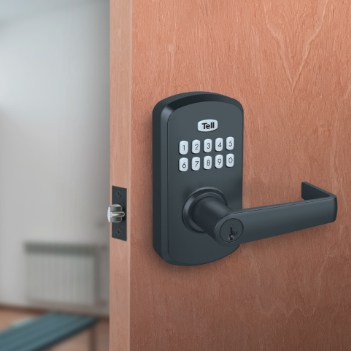 The primary function of an electronic keypad lock is to provide secure, keyless entry. Here's how it generally works:
The primary function of an electronic keypad lock is to provide secure, keyless entry. Here's how it generally works:
- Code Entry: Users enter a pre-set numeric code on the keypad. The code is usually 4 to 6 digits, providing a large number of possible combinations to enhance security. This is a standard feature in keyless entry door locks.
- Code Verification: The control unit verifies the entered code against stored codes. If the code matches, an electronic signal is sent to the locking mechanism to disengage the lock. This is essential in all types of electronic keypad locks for doors.
- Access Control: Many electronic keypad locks allow multiple codes to be programmed, each assigned to different users. This feature is particularly useful in settings where multiple people need access at different times. Such features are common in both residential and commercial keypad door locks.
- Locking and Unlocking: Once a valid code is entered, the locking mechanism disengages, allowing the door to be opened. After a set period, the lock can automatically re-engage, enhancing security by ensuring the door is not inadvertently left unlocked. This functionality is a hallmark of keyless entry door locks and smart key locks.
- Additional Features: Advanced locks may include features such as audit trails, which record entry times and codes used, temporary codes for guests or service personnel, and integration with other security systems. These features are often found in high-end keypad door locks and smart locks.
Benefits of Electronic Keypad Locks
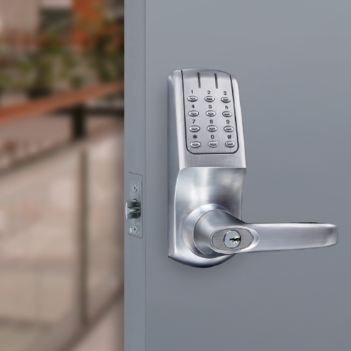 Electronic keypad locks offer several advantages over traditional locks:
Electronic keypad locks offer several advantages over traditional locks:
- Keyless Convenience: The primary benefit is the elimination of keys. This reduces the risk of lost or stolen keys and the need for rekeying locks. This convenience is central to all keyless entry door locks.
- Enhanced Security: The ability to set and change codes easily enhances security. Codes can be changed regularly to prevent unauthorized access. This is a significant advantage of keypad locks for doors.
- Access Control: Multiple users can have unique codes, providing a clear record of who accessed the premises and when. This feature is particularly useful in commercial settings where monitoring access is crucial.
- Ease of Installation: Many electronic keypad locks are designed for easy installation, often requiring no more effort than replacing a traditional lock. This ease applies to most keyless entry door locks with handles.
- Durability and Reliability: Electronic keypad locks are often more durable than mechanical locks because they have fewer moving parts that can wear out over time.
Considerations and Challenges
Despite their benefits, electronic keypad locks also present certain challenges and considerations:
- Power Supply: Since these locks are typically battery-powered, they require periodic battery changes. If the battery dies, it can lock users out, although most models provide low-battery warnings and emergency power options. This is a consideration for all types of battery-powered keypad locks for doors.
- Complexity: While installation can be straightforward, troubleshooting electronic issues may require professional assistance. Additionally, the more advanced features a lock has, the more complicated it can be to use and maintain. This complexity can affect both keypad door locks and smart locks.
- Security Risks: Although generally secure, electronic locks can be vulnerable to hacking, especially smart locks with wireless connectivity. It is essential to use robust, unique codes and regularly update firmware to mitigate this risk.
- Cost: Electronic keypad locks vary widely in price depending on quality and features. They tend to be more expensive than traditional locks. However, the added security and convenience often justify the investment.
- Environment Sensitivity: Extreme weather conditions can affect the performance of electronic components. Therefore, selecting a lock designed to withstand specific environmental conditions is crucial.
Conclusion
Keyless entry locks, including electronic keypad locks and smart locks, represent a significant step forward in lock technology, offering a blend of security, convenience, and modern functionality. By understanding their components, functionality, benefits, and potential challenges, consumers can make informed decisions about implementing these advanced locking systems. Whether for residential, commercial, or institutional use, electronic keypad door locks provide a reliable and efficient solution for secure access control.
Explore Tell Keypad Door Locks
Available at online retailers, national home improvement stores, and select dealers, Tell offers two popular electronic keypad locks for interior or exterior applications for business or home.
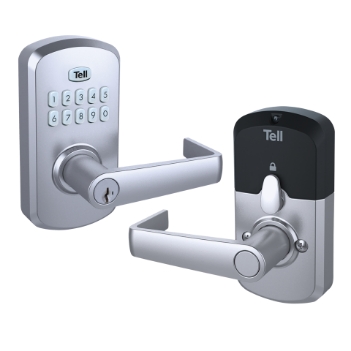
LE2000 Series Electronic Keypad Lock
A simple and secure electronic lock for a variety of applications. This Grade 2 lever is ideal for offices, retail spaces, modular buildings, temporary construction access, public restrooms, storage closets, garage doors, rental properties, and more.
See MoreCL5000 Series Electronic Keypad Lock
A heavy-duty zinc alloy electronic lock for use in high traffic applications. Particularly suitable for use in health, educational, commercial and residential environments, this Grade 2 lever combines excellent security with ease of use.
See More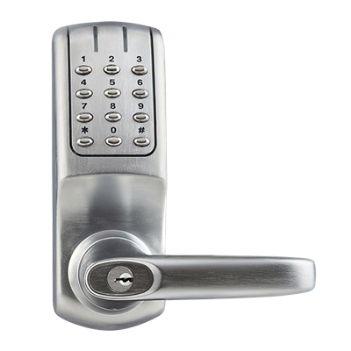
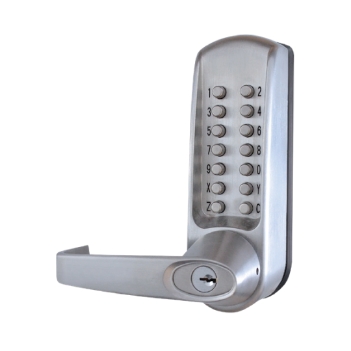
CL600 Series Mechanical Keypad Lock
A heavy-duty zinc alloy electronic lock for use in high traffic applications. Particularly suitable for use in health, educational, commercial and residential environments, this Grade 2 lever combines excellent security with ease of use.
See More